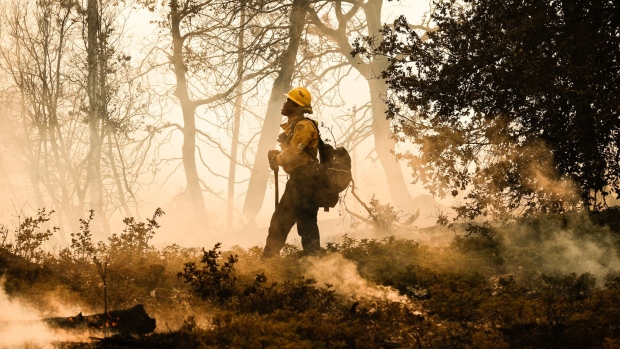Sep 1, 2022
Forests in US West, Canada, Parts of Amazon Face Higher Climate Risk
, Bloomberg News

(Bloomberg) -- It’s clear that the climate crisis is affecting ecosystems around the world — but exactly how and where that will happen next is difficult to estimate. Now an international team of researchers has compared and synthesized different methodological approaches in order to predict how climate change will threaten the globe’s forests through the end of this century.
The study, published today in the journal Science, finds that southern boreal forests (such as in continental Canada), western North American forests and large swaths of the Amazon will be at particularly high risk in coming decades.
That is bad news for both the richness of life on the planet as well as for the climate: Forests harbor the vast majority of the terrestrial diversity of life. There are 60,000 individual species of trees alone, while forests are home to 80% of all amphibian, 75% of all bird and 68% of all mammal species. They are also one of the most important sinks for carbon, storing twice as much as they emit (through rotting trees or wildfires, for example). Forests absorb a net 7.6 billion metric tons of CO₂ per year, about 1.5 times the annual carbon emissions of the US.
The new study is not the first global attempt at projecting the climate impact on forests. It is, however, the first time that three different modeling approaches have been combined, together with the most recent available data, said Marko Scholze, senior lecturer at the Department of Physical Geography and Ecosystem Science at the University of Lund, Sweden. He was the lead author of a 2006 study on climate risks to forests and was not involved in the new research.
The three main modeling approaches capture different aspects of climate risk to forests’ carbon storage and species composition, and of disturbances to the forest. Comparing them, the researchers found “high variability across risk metrics in many regions” and “broad-scale disagreement.”
“In my opinion, the major outcome of this study is the divergence of the three approaches which ultimately pinpoints to the facts that we are still lacking a solid and robust understanding of the climate induced risks on forests,” said Scholze.
William Anderegg, the study’s lead author and an associate professor in the School Of Biological Sciences at the University of Utah, said he was also surprised: “I expected at least partial agreement across the different approaches.” He added that “it highlights that much more development, research, evaluation is needed.” However, Anderegg said, the findings are still relevant for conservation and policy making. While more detailed decisions about specific regions await more clarity, the areas of cross-model agreement do allow for prioritization. By contrast with the high-risk areas, forests in eastern North America, western Amazonia, and southeast Asia exhibited lower than average risk, the researchers found.
The research underscores uncertainty about the effectiveness of forest carbon offsets, which assume that trees will keep their carbon locked in for centuries. But many are liable to burn or suffer from other climate impacts sooner, and their risk profiles are difficult to ascertain.
Walter Jetz, a professor of ecology and evolutionary biology at Yale University, who did not take part in the study, said the “results point to some key regions that all research perspectives identify as at high risk of losing the basic functions and services they deliver for people and the planet.”
The team also developed a tool for people to examine risk patterns and visualize the data.
©2022 Bloomberg L.P.


